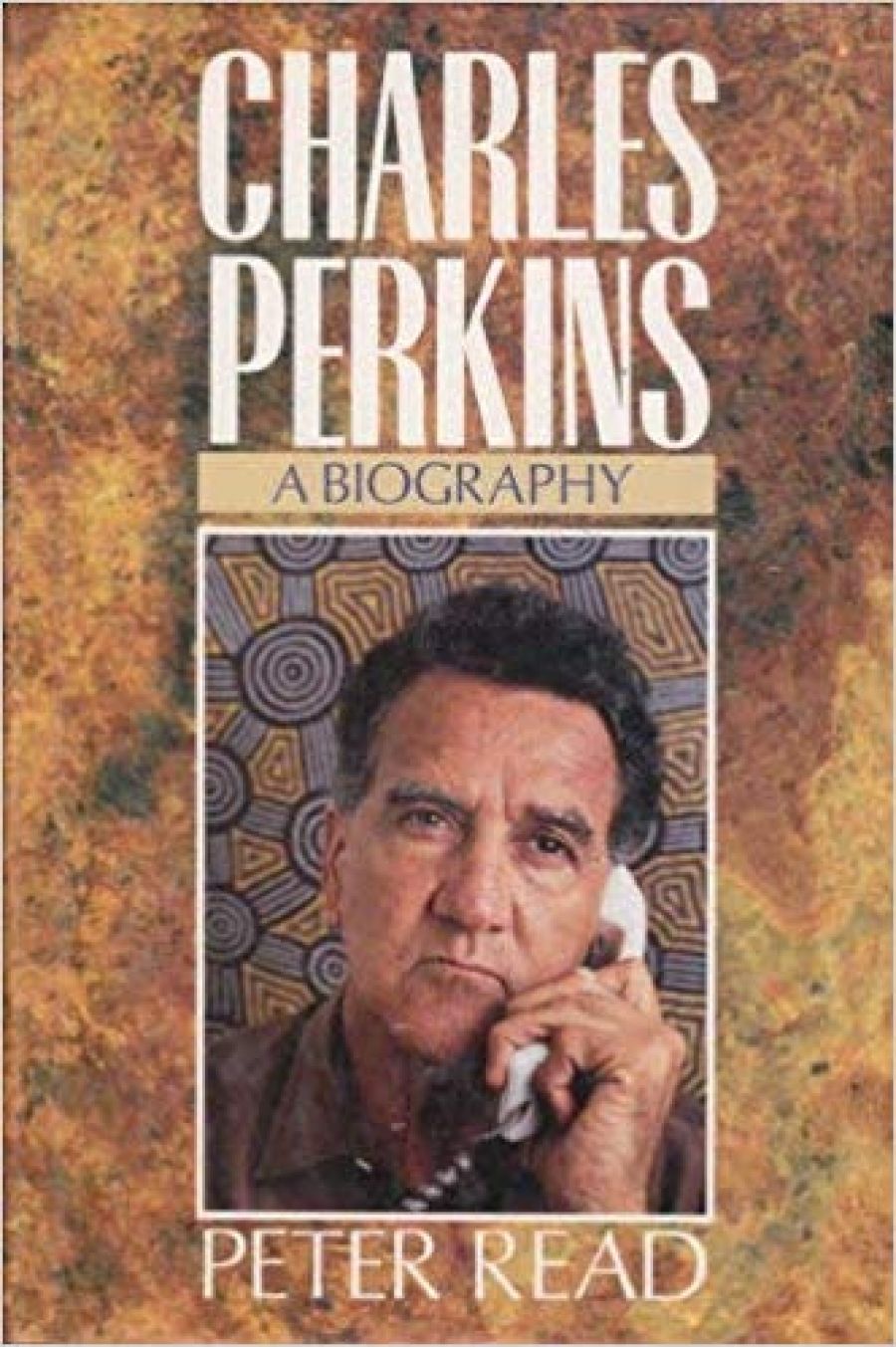
- Free Article: No
- Contents Category: Biography
- Review Article: Yes
- Online Only: No
- Custom Highlight Text:
His minister described him as a permanent troubleshooter. And yet Charlie Perkins was surely the most trouble-prone and troublesome permanent head in Australian administrative history. Where other bureaucratics operated stealthily to preserve the outward appearance of responsible government, he engaged in calculated acts of public defiance and abuse of the governments he was meant to serve. They could no more dispense with his services, however, than he could operate without their largesse. And so for the best part of twenty year the volatile mediator orchestrated relations between the state and the modern Aboriginal movement.
- Book 1 Title: Charles Perkins
- Book 1 Subtitle: A biography
- Book 1 Biblio: Viking, $29.95 pb, 317 pp
The biographer’s privileged position gives his work a particular intimacy. We follow in the footsteps of Charles Perkins as he spends his early childhood at Alice Springs. We see grandmother Nellie Errerreke Perkins through his eyes as she comes to the fence of the ‘half-caste home’ she is forbidden to enter. We are separated with him from his mother, Hetti, when in his tenth year he is taken with five other boys down to Adelaide. We feel his resentment of the institutional discipline, the loss of contact with family and culture, the loneliness and desolation. And we follow his growing capacity and articulateness as a soccer player, then a student and activist who moves to Sydney and achieves national prominence in the Freedom Ride of 1965.
The story is poignant and compelling, but the polished narrative surface covers a multi-layered, polyvocal artefact. Read sets Perkins’s testimony within his own historian’s reconstruction of Aboriginal and non-Aboriginal relations around Alice over three generations of the Perkins family. He plays off Perkins’s hostile account of St Francis House in Adelaide against the more qualified memories of other inmates. He uses hindsight to accentuate the crucial stages of what he describes as ‘the pilgrimage towards an Aboriginal identity’.
The teleological limitations of this perspective are softened by Read’s appreciation that such an identity had to be made as well as found, and that Perkins helped make it. At first the process is registered as a feeling of loss, a dual exclusion from the life he knew no more and the new one from which he was excluded. Gradually, the feeling acquires urgency as Perkins chafes against the boring, repetitive routine of an apprenticeship and a bedsit: it was, he could later claim, ‘like making a wharf labourer out of an artist’. The growing impatience (‘wasted time, wasted time’) expresses the tug of hindsight. Crucial in the retrospective of self-explanation is the time Perkins spent in the north of England as a professional soccer player during the late 1950s; he left it too late to reach the top but found in that setting that race was only one form of inequality, and no more immutable than the others.
When Perkins’s self-discipline and volatility, competitiveness (‘I hate losing’) and aloofness were transferred from Adelaide to Sydney, they ran up against different forms of Aboriginal activity. He was ill at ease with the Australian Aborigines’ Fellowship, with its orientation towards the union movement and the left. Thus he gravitated towards sympathetic figures such as Ted Noffs, who orchestrated support among respectable Sydney for the Foundation for Aboriginal Affairs that became Perkins’ base. The division was not absolute – the Freedom Riders spanned it – but was enduring and telling. Read explains Perkins’s alignment as a combination of factors: personal antagonism, temperamental conservatism; a preference for practical measures over confrontation; change from the bottom, not doctrinaire programmes.
His moderation was extreme. There could be no truck with socialists or communists. In 1967, Perkins sought out Prime Minister Harold Holt to warn of the dangers of communists in the Aboriginal movement, and was invited to put his views on the future of Aboriginal affairs in writing. In the same year the veteran redbaiter Billy Wentworth advised Holt that ‘Perkins was not a bad man, but may get into bad hands’. The secretary of the prime minister’s department suggested that they should ‘keep Perkins in play’. By 1969 he was senior research officer in the new Office of Aboriginal Affairs.
His moderation was also intemperate. From the time he went to Canberra, Perkins honed his skills as a publicist of the Aboriginal cause. He repeatedly drew attention to how much had to be done and how quickly. He warned of the danger of a conflagration that only he could avert, and to emphasise the point he was quite capable of orchestrating Aboriginal protest. It is possible to interpret celebrated episodes such as his 1975 attack on Joh Bjelke-Petersen’s car as gestures designed to shore up his standing in the eyes of his people, but such an interpretation misses the intense personal strain his brinkmanship imposed on him and those around him.
More fundamentally, there was the unresolved – perhaps unresolvable – tension between his project of Aboriginal self-help and his own place at the apex of a bureaucracy. Read signals some of the allegations that Perkins attracted (autocracy, cronyism, pork-barrelling, jealousy of rivals) but treats the 1989 findings of inquiries into his record as an exoneration. This leaves unexplained the mounting Aboriginal criticism of the Department of Aboriginal Affairs and the Aboriginal Development Commission.
It is here that the limitations of writing contemporary biography so close to events become apparent. Read sees the final demise of Perkins’ public career as signalling a public retreat from earlier commitment to meet Aboriginal needs and aspirations. A historian who looks back some decades hence might decide instead that Perkins’ particular skills had become irrelevant. But he will surely be remembered as an extraordinary individual who changed irreversibly the terms on which Aboriginals engage in public life.


Comments powered by CComment